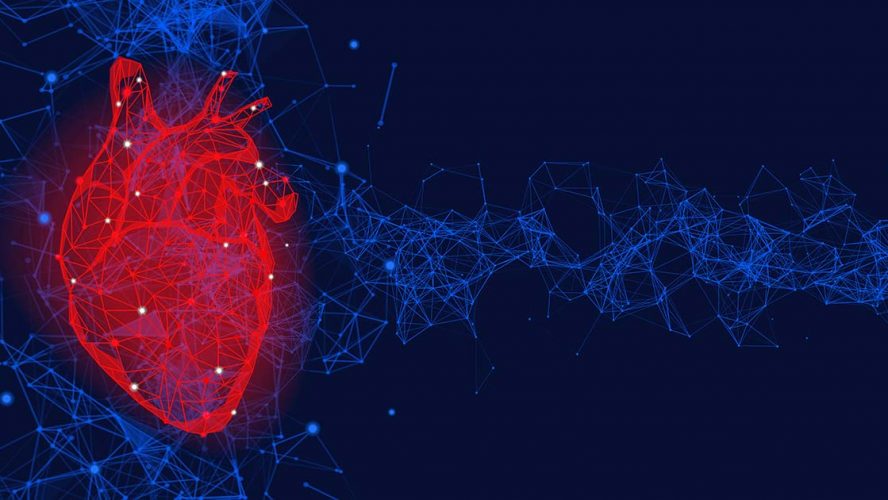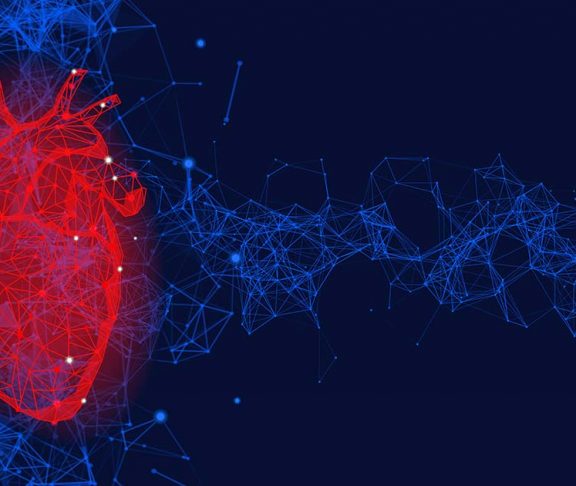
Dr. George Adams
CEO & Executive Chairman, Ventripoint
Ventripoint Diagnostics’ heart analysis system provides cardiac metrics with an accuracy comparable to MRI with the ease of ultrasound, improving comfort and accessibility for patients.
A new technology using artificial intelligence (AI) is allowing physicians to understand the whole heart in a way that wasn’t previously possible, helping improve care for patients with cardiac disease.
A key aspect of the Ventripoint Diagnostics’ VMS+3.0 whole-heart analysis system is that it provides a clear image of the function of the right side of the heart. “It’s difficult to get functional images of the right side of the heart with a conventional 2D ultrasound,” says Dr. George Adams, CEO and Executive Chairman of Ventripoint. While an MRI gives clear, sharp images, it requires patients to be in the MRI machine for one to two hours and the waiting list to get an MRI can be several months. In addition, due to the use of a strong magnet, MRI cannot be performed on patients with such devices as implanted pacemakers, cochlear implants, and metal prosthetic devices. “The VMS+3.0 gives doctors the ability to visualize the right side of the heart quickly, accurately, and precisely,” says Dr. Adams.
Technology improves the understanding of how the right side of the heart is performing
Partly because of the difficulty in seeing the right side of the heart, it has often been overlooked. Right side functioning is now known to play a key role in determining clinical status and outcomes in patients with pulmonary hypertension, cardiomyopathies, and congenital heart disease.
The VMS+3.0 system was created as a better way to care for patients rather than having to perform an MRI on children. Using Ventripoint’s patented Knowledge-Based Reconstruction AI technology, the system takes data from a patient’s ultrasound image and reconstructs an accurate 3D representation of the patient’s actual heart, from which cardiac metrics are derived.
The VMS+ 3.0 gives doctors the ability to look at the right side of the heart quickly, accurately and precisely.
“We’ve all seen the power of AI and machine learning in today’s world. Ventripoint has harnessed the power of AI to improve cardiac imaging, namely how we analyze ultrasound imaging of the heart,” says Dr. Howard Leong-Poi, a Clinician Scientist at the Keenan Research Centre for Biomedical Science and Head of the Division of Cardiology at St. Michael’s Hospital. “The vast majority of cardiac ultrasound imaging (or echocardiography) is performed using two-dimensional imaging, taking multiple slice views of the heart, which the reader uses to make measurements, assess heart function, and identify pathology. Of course, the heart is a beating three-dimensional organ, so it makes sense that 3D imaging would be more accurate to evaluate the heart. Ventripoint has developed an AI-based system to take everyday 2D echo images and extract 3D-quality data that has been shown to have the accuracy needed, resulting in its approval for clinical use. The hope with this technology is that it will provide better care to our patients. We’re very excited to be involved in being one of the early adopters of this new generation of the technology and participating in its evolution.”
System improves cardiac care for all patients
The VMS+3.0 system connects to conventional ultrasound machines found in any cardiac echo environment, making it convenient to use, while providing the cardiac metrics with an accuracy comparable to MRI. This opens up many possibilities for doctors and patients. For example, children born with congenital heart disease, who must get their heart checked often, can have their parents near them in the room during the procedure. Physicians can more easily monitor patients receiving cancer therapy, which can often cause chronic heart conditions, to see if they need to adjust treatment to minimize heart damage. Pregnant women with cardiovascular issues can also be monitored carefully and safely during their pregnancies.
“Integral to the care of patients is an ability to non-invasively evaluate right heart function, which is difficult,” says Dr. John Granton, Professor of Medicine at the University of Toronto and Consultant in Pulmonary and Critical Care Medicine at Toronto General Hospital.. “The Ventripoint system has recently been installed and we’re looking forward to it complementing our clinical care and research enterprise. We’re especially enticed by the ease of analysis of images in a busy clinical setting.”
Dr. Adams says there are medications and techniques to treat right heart failure that differ from those for left heart failure. “The critical thing is to determine what kind of heart failure is happening and treat it properly. Routine use of the VMS+ 3.0 allows for repeated exams and close monitoring of patients. After all, you cannot treat, what you cannot see.”



